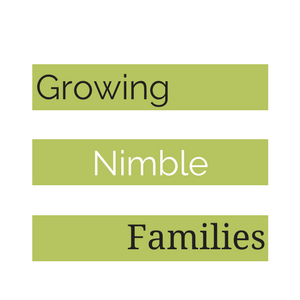Here is the second in a series of articles written by the talented Elaine from littlesheeplearning.co.uk. Elaine also writes a blog  that has news from Littlesheep Learning
that has news from Littlesheep Learning and the wider world of education and learning. She’s also featured in the free play-activities.com
and the wider world of education and learning. She’s also featured in the free play-activities.com daily play activity emails.
daily play activity emails.
[tag]Sensory play[/tag] an introduction
Sensory Play 2 – Sight
The most commonly stimulated sense for young children is sight. From birth, babies are given brightly coloured and patterned toys, and many children and adults learn best through their sight. This article gives a range of activities that are all focused on using visual skills.
One of the best ways to stimulate the sense of sight is to allow your child to experience as many different sights as possible. Take your child to as many different places as possible; shops, parks, libraries, the seaside, zoos and aquariums all provide varied things to look at. Exposing your child to new and interesting experiences will keep them curious about the world around them. While you are exploring these places, talk to you child about what they are seeing, tell them about the colours, the shapes, the names of the objects or even how it makes you feel.
Play with coloured or shaped objects – brightly coloured or shaped bean bags, balls, toy cars and bricks can be used for a variety of games which will stimulate the child and can help them learn their colours when used in play – for example, can you find the red ball, green car, triangular brick, star bean bag.
Make sight sensory bottles – collect together some old plastic drinks bottles and fill them with different objects for example; fluffy pompoms, glitter, bubbly water or coloured liquids. Let children experiment with these; they can shake them and watch the bubbles form and glitter sparkle, pretend to pour and watch the liquid slosh about or even experiment with mixing colours by holding a bottle of yellow dyed water in front of the blue dyed water to see green.
Make visually stimulating mobiles by hanging CDs from cotton by the window – watch them sparkle in the light and make ‘rainbows’. This can also be done using prisms and pieces of glass.
From an early age children enjoy ‘peekaboo’ games, these show the sight sensation of light and dark. Other games looking at light and dark that children will enjoy are playing with torches or fibre optic wands.
Mirrors are also fun for reflecting games and learning about symmetry – draw half pictures, for example an apple, or a face and use the mirror to make the other half to view the whole, what happens if you try this with half a clock face or the front half of a car? Use two or more mirrors together with a small object to see how many of them you can make (hint use the mirrors touching at one end to make a ‘v’ shape round the object).
Mixing water and food colouring will make colourful liquids. Get some plastic cups and fill with water and a selection of food colourings. Using droppers carefully drop one drop of a colour into the water, what happens if you add more than one drop? Or if you mix the colours?
A fun game using the sense of sight is ‘Kim’s Game’ where you place a number of familiar items on a tray, allow the children to view the objects for one minute and then cover. Ask the children to remember what they saw. An alternative is to remove an item and see if the children can recall the missing thing.
Finally, another visual activity is providing children with a variety of different viewing objects – sun glasses, magnifying glasses, coloured transparancies, binoculars and reading glasses. Look at different objects and describe what you see and how it differs between the different viewing objects.
As you can see from these suggestions there are many different visually stimulating activities that your child could enjoy to experience the sense of sight to discover colours, shapes, brightness and visual memory, these are just a few – the limitations are endless.
Elaine Lambe
Educational consultant
Elaine trained as an Occupational Therapist before working with children with autism on home based early intervention programmes. Through her work in the home she helped parents to support their child’s learning, implemented behaviour plans and assisted with teaching self help skills for example toilet training, self-feeding and dressing. She has also had experience of supporting children with special educational needs in mainstream schools, adapting the curriculum to make it accessible to them. After the birth of her first child, Elaine started Littlesheep Learning – www.littlesheep-learning.co.uk – an online store with an ever-growing range of teaching and learning materials for everyone who wants to help their children reach their potential.
 ********Share your sensory play-activities using sight with us***********











Wow! Nice entry! We did some of these things when ours were little and they LOVED it … so did I 🙂
(seen on Carnival of Family Life)
my son has always liked looking at himself in the mirror. it was so cute to watch him do it.